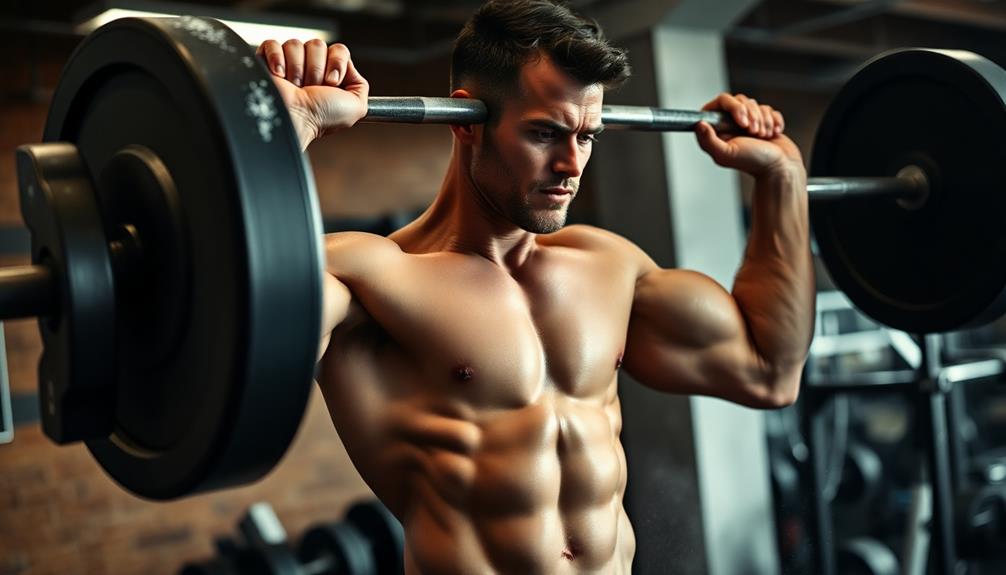Powerlifting builds muscle effectively through several key mechanisms. When you lift heavy weights, you create micro-tears in muscle fibers, which your body then repairs and strengthens. This process, coupled with progressive overload, stimulates muscle growth over time. Compound movements like squats and deadlifts engage multiple muscle groups simultaneously, maximizing muscle fiber activation. Heavy lifting also triggers the release of muscle-building hormones such as testosterone and growth hormone. The time under tension experienced during powerlifting movements further contributes to muscle hypertrophy. By focusing on proper form and controlled movements, you'll optimize muscle engagement and growth. Exploring these factors in depth will reveal the full potential of powerlifting for muscle building.
Core Insight
- Heavy lifting creates micro-tears in muscles, prompting repair and growth when combined with adequate protein intake.
- Compound movements in powerlifting activate multiple muscle groups simultaneously, maximizing muscle fiber engagement.
- Progressive overload techniques gradually increase weight or reps, consistently challenging muscles for continuous growth.
- Powerlifting stimulates the release of muscle-building hormones like testosterone and growth hormone.
- Time under tension during heavy lifts promotes muscle activation and growth, especially with controlled, full-range movements.
The Science of Muscle Hypertrophy

Powerlifting isn't just about getting stronger. It's also a great way to build muscle. Here's how it works:
When you lift heavy weights, you create tiny tears in your muscle fibers. Your body then repairs these fibers, making them bigger and stronger. This is called muscle hypertrophy.
To support this muscle growth, you need to eat right. Make sure you're getting enough protein in your diet. Protein is essential for repairing and building new muscle tissue.
Powerlifting exercises like squats, deadlifts, and bench presses work multiple muscles at once. This triggers your body to produce more muscle-building hormones, especially testosterone and growth hormone. These hormones are key to creating new muscle tissue through a process called muscle protein synthesis.
Progressive Overload in Powerlifting
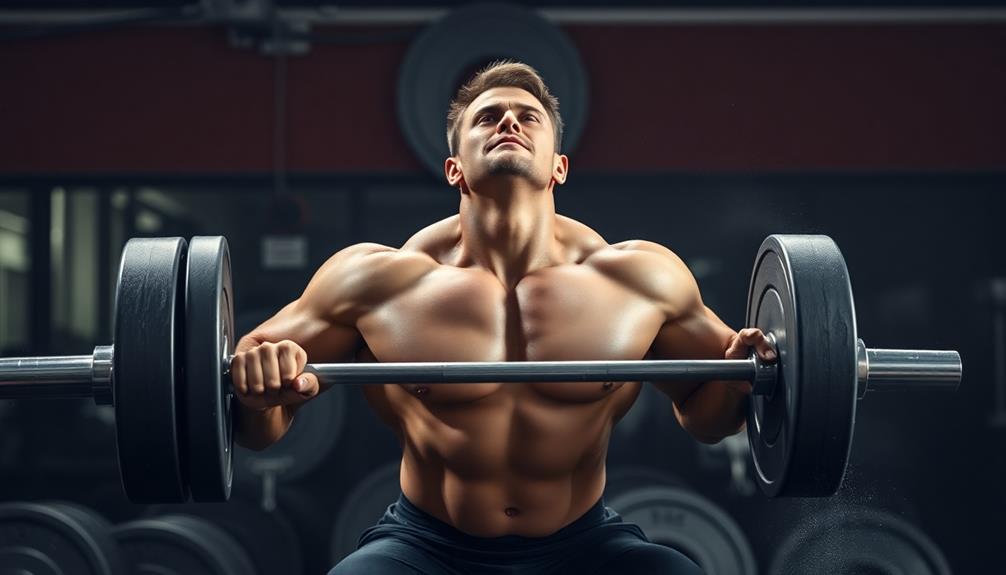
Progressive overload is the key to building muscle with powerlifting. It means slowly making your lifts harder over time. In powerlifting, you'll do three main lifts: squat, bench press, and deadlift. To use progressive overload, you need to:
- Add weight
- Do more reps
- Use better form
Check out this sample plan:
| Week | Weight (%) | Sets | Reps |
|---|---|---|---|
| 1 | 70 | 3 | 5 |
| 2 | 75 | 3 | 5 |
| 3 | 80 | 3 | 3 |
Pick a starting weight you can lift for the sets and reps listed. Each week, add a bit more weight while keeping good form. This gradual increase pushes your muscles to grow bigger and stronger. Just remember, you have to stick with it. That's how you build muscle with powerlifting.
Compound Movements and Muscle Recruitment
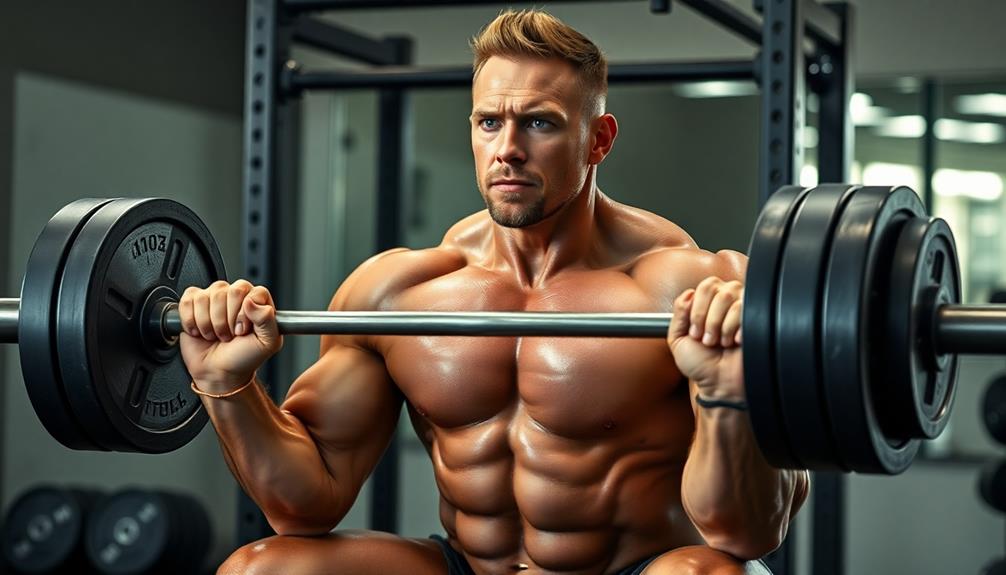
Compound exercises like squats, deadlifts, and bench presses are the foundation of powerlifting and muscle building. They work multiple muscles at once, leading to more overall muscle activation. When you do these lifts, you target whole muscle groups, not just single muscles.
Compound movements are efficient. They work more muscle fibers and cause a bigger hormone response than isolation exercises. This means more muscle growth in less time. Plus, these exercises copy real-life movements, boosting your functional strength and sports performance.
To get the most muscle activation, use good form and full range of motion. This ensures you're working the right muscles and avoiding injury. It's not just about lifting heavy; it's about lifting smart and activating as many muscle fibers as you can.
Hormonal Response to Heavy Lifting

Lifting heavy weights stimulates your body to produce more of three important hormones: testosterone, growth hormone, and IGF-1. These hormones work together to help your muscles grow bigger and recover faster after your workouts.
To get the most out of this effect, focus on three key things:
- Use heavy weights that are 85-95% of the heaviest weight you can lift for one rep
- Do compound exercises that work multiple muscle groups, like squats, deadlifts, and bench presses
- Keep your rest periods short, around 60-90 seconds between sets
Powerlifting triggers a bigger release of these muscle-building hormones compared to lifting lighter weights. It's a different approach than taking supplements, but both can help you gain muscle mass.
Time Under Tension
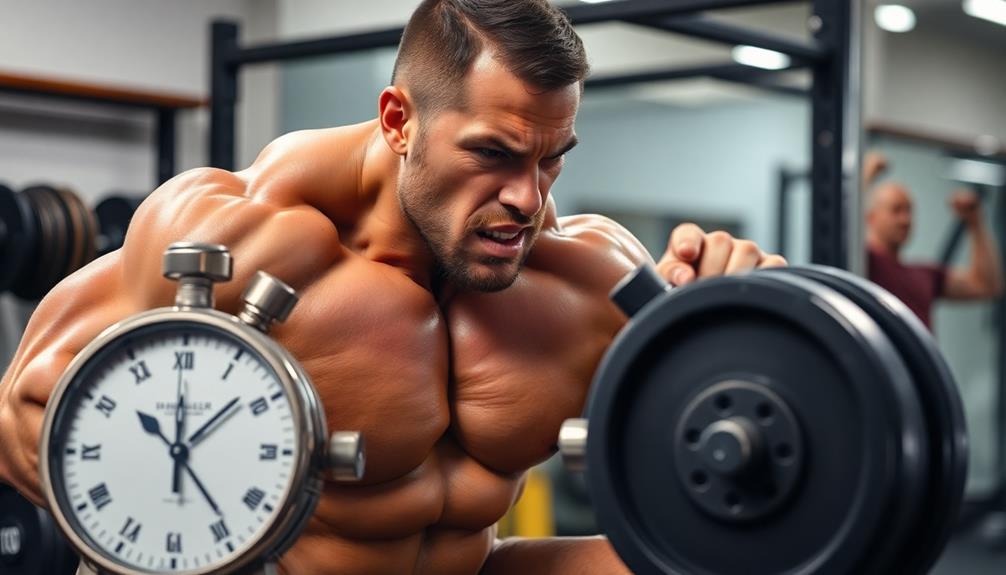
Time under tension is key for muscle growth when powerlifting. It's about how long your muscles are straining during an exercise. Lifting heavy weights increases this time naturally, which helps your muscles grow. Pure L-Glutamine supplements can boost muscle recovery and growth, working well with the time under tension idea. The right supplements and training methods can help you build muscle better.
To get the most out of time under tension, focus on controlled movements. Don't rush your reps. Keep a steady pace, especially when lowering the weight. Powerlifters often talk about "owning the weight." This means staying in control through the whole range of motion.
Eccentric Phase Importance
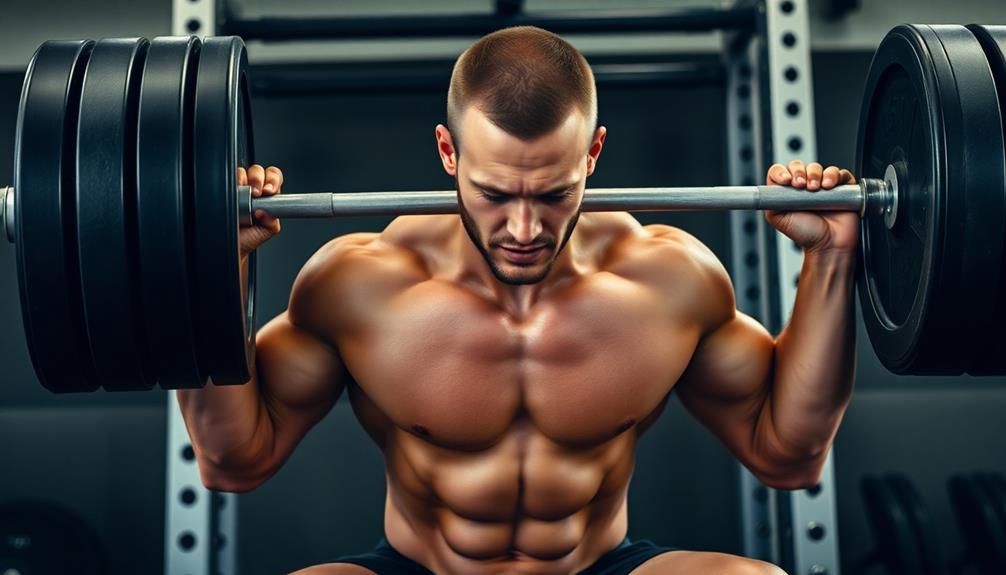
When lifting weights, don't forget about the importance of lowering them. The eccentric phase, or the part where you lower the weight, is crucial for muscle growth. This is when you cause more muscle damage, leading to bigger gains. It's kind of like how a deep tissue massage can work out muscle knots and get the blood flowing to help you recover and grow.
To get the most out of the eccentric phase:
- Take your time lowering the weight
- Keep the weight under control through the whole movement
- Pay attention to how the muscle stretches
Recovery and Muscle Growth

Your powerlifting workout is just the start of building muscle. After lifting, your body needs time to recover and grow. During recovery, your muscles repair the tiny tears from heavy lifting. This repair leads to more strength and size. Sleep and recovery products can speed up this process, helping you rest better and repair muscle faster.
To build as much muscle as possible, focus on good nutrition and rest. Eat enough protein to help repair muscle, and don't forget carbs to refill your energy. Try to get 7-9 hours of good sleep each night. This is when your body releases growth hormone.
Light cardio or stretching can be active recovery. This reduces muscle soreness and improves blood flow. Don't overtrain, though. Listen to your body and rest enough between powerlifting workouts.
Nutrition for Powerlifting Gains
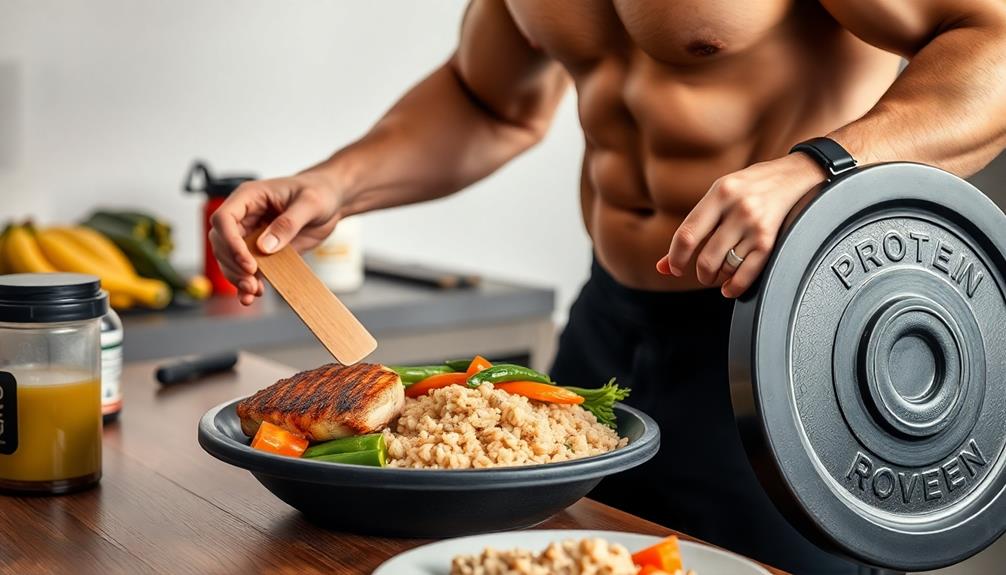
Eating right is key for making gains in powerlifting. You need to eat enough calories to build muscle, with plenty of protein. Aim for 1.6 to 2.2 grams of protein per kilogram of body weight each day. Adding HMB supplements to your diet may help you build more muscle, break down less muscle, and recover better after tough workouts.
Carbs give you energy for heavy lifts, and healthy fats are important for making hormones. To get the most out of your powerlifting diet:
- Eat balanced meals throughout the day
- Have a meal with carbs and protein before your workout
- Drink a protein shake or eat a meal within 30 minutes after training
Drink plenty of water and think about taking supplements like creatine monohydrate, which can boost strength and muscle growth. The key is being consistent with both your training and eating habits to reach your powerlifting goals.
Periodization for Optimal Results
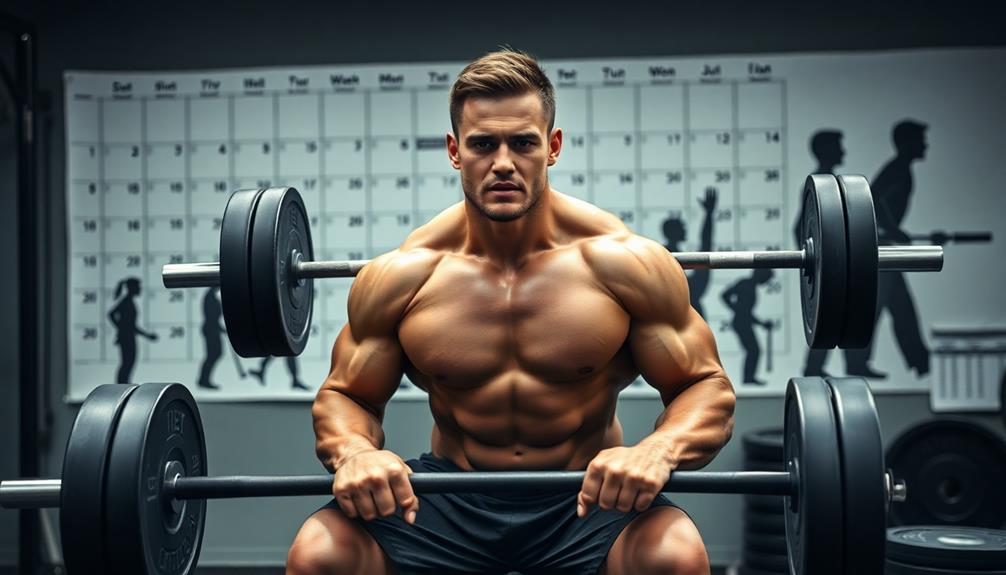
Proper training structure is just as important as nutrition for powerlifting success. Periodization is a key strategy to get the best results. It means changing your training volume and intensity over time in a planned way. This helps you get as strong as possible and build the most muscle. Taking supplements at the right times around your workouts can help your muscles recover and grow even more.
You can use different types of periodization:
- Linear: Slowly increase the weight while lowering the number of sets and reps
- Undulating: Change the weight and sets/reps from week to week
- Block: Focus on certain goals in specific training blocks
To use periodization the right way:
- Start with a clear goal (like a competition or personal record)
- Plan out your long-term, medium-term and short-term training cycles
- Include lighter weeks for recovery
- Change your plan if needed based on how you're progressing
Frequently Asked Questions
How Long Does It Take to See Significant Muscle Gains From Powerlifting?
You'll typically see noticeable muscle gains from powerlifting within 2-3 months. However, significant changes can take 6-12 months of consistent training. Your progress depends on factors like diet, rest, genetics, and training intensity.
Can Powerlifting Be Combined With Other Forms of Strength Training?
Yes, you can combine powerlifting with other strength training methods. You'll benefit from incorporating bodybuilding, Olympic weightlifting, or functional fitness exercises. This variety can enhance your overall strength, muscle growth, and athletic performance. Don't be afraid to mix it up!
What's the Ideal Training Frequency for Muscle Growth in Powerlifting?
You'll want to train each muscle group 2-3 times per week for best growth. Space your sessions to allow for sufficient recovery. Don't forget to adjust your frequency based on your experience level and recovery ability.
Are There Age Limitations for Starting Powerlifting to Build Muscle?
You're never too old to start powerlifting for muscle growth. While younger people may have some advantages, you can still build significant muscle in your 30s, 40s, and beyond. Just start slowly and listen to your body.
How Does Powerlifting Affect Muscle Definition Compared to Bodybuilding?
You'll build dense, powerful muscles with powerlifting, but it won't give you the same sculpted look as bodybuilding. Powerlifting focuses on strength, while bodybuilding aims for aesthetic muscle definition through targeted isolation exercises and strict dieting.

